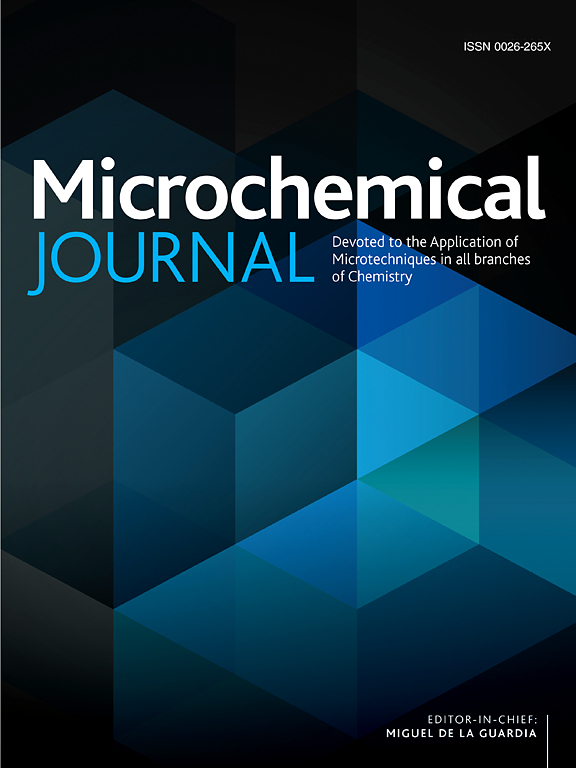Split Aptamer-Driven CRISPR-Cas12a biosensor with signal amplification for quantitative detection of adenosine deaminase
IF 4.9
2区 化学
Q1 CHEMISTRY, ANALYTICAL
引用次数: 0
Abstract
We report the development of a novel split aptamer-driven electrochemical biosensor integrating entropy-driven Signal amplification (EDSA) and CRISPR-Cas12a technology for the highly sensitive and specific detection of adenosine deaminase (ADA). ADA is an important biomarker involved in immune regulation and purine metabolism, and its accurate quantification is critical for diagnosing various diseases. In our system, ADA catalyzes the deamination of adenosine to inosine, resulting in the release of Aptamer1 from a split aptamer structure. The liberated Aptamer1 initiates a strand displacement reaction within a Blocker/Bandage/Scaffold complex, triggering a cascade of entropy-driven amplification cycles that generate a DNA duplex capable of activating CRISPR-Cas12a. Activated Cas12a exhibits trans-cleavage activity, specifically cleaving a ferrocene-labeled single-stranded DNA (ssDNA) probe immobilized on a gold electrode, leading to a measurable decrease in electrochemical signal. The biosensor operates under isothermal and enzyme-free conditions, providing simplicity, rapid detection, and low cost. It achieves a low detection limit of 0.688 U·L−1 with a wide linear range from 1 to 20,000 U·L−1. The system demonstrates excellent specificity against ADA analogues and common interfering proteins and performs reliably in diluted human serum samples. This strategy represents a versatile and modular platform for point-of-care diagnostics. By altering the aptamer sequence, the biosensor can be adapted for the detection of other clinically relevant proteins and enzymes, contributing to advances in personalized medicine.
带有信号扩增的分裂适配体驱动CRISPR-Cas12a生物传感器用于腺苷脱氨酶的定量检测
我们报道了一种新型的分裂适配体驱动的电化学生物传感器的开发,该传感器集成了熵驱动信号放大(EDSA)和CRISPR-Cas12a技术,用于高灵敏度和特异性检测腺苷脱氨酶(ADA)。ADA是参与免疫调节和嘌呤代谢的重要生物标志物,其准确定量对各种疾病的诊断至关重要。在我们的系统中,ADA催化腺苷脱胺为肌苷,导致Aptamer1从分裂的适体结构中释放出来。释放的Aptamer1在Blocker/绷带/支架复合体内启动链位移反应,触发熵驱动的扩增循环级联,产生能够激活CRISPR-Cas12a的DNA双工。激活的Cas12a表现出反式切割活性,特别是切割固定在金电极上的二铁标记的单链DNA (ssDNA)探针,导致可测量的电化学信号减少。该生物传感器在等温和无酶条件下工作,提供简单,快速检测和低成本。检测限为0.688 U·L−1,线性范围为1 ~ 20,000 U·L−1。该系统对ADA类似物和常见干扰蛋白具有良好的特异性,在稀释的人血清样品中表现可靠。这一策略为即时诊断提供了一个通用的模块化平台。通过改变适体序列,这种生物传感器可以用于检测其他临床相关的蛋白质和酶,为个性化医疗的进步做出贡献。
本文章由计算机程序翻译,如有差异,请以英文原文为准。
求助全文
约1分钟内获得全文
求助全文
来源期刊

Microchemical Journal
化学-分析化学
CiteScore
8.70
自引率
8.30%
发文量
1131
审稿时长
1.9 months
期刊介绍:
The Microchemical Journal is a peer reviewed journal devoted to all aspects and phases of analytical chemistry and chemical analysis. The Microchemical Journal publishes articles which are at the forefront of modern analytical chemistry and cover innovations in the techniques to the finest possible limits. This includes fundamental aspects, instrumentation, new developments, innovative and novel methods and applications including environmental and clinical field.
Traditional classical analytical methods such as spectrophotometry and titrimetry as well as established instrumentation methods such as flame and graphite furnace atomic absorption spectrometry, gas chromatography, and modified glassy or carbon electrode electrochemical methods will be considered, provided they show significant improvements and novelty compared to the established methods.
 求助内容:
求助内容: 应助结果提醒方式:
应助结果提醒方式:


